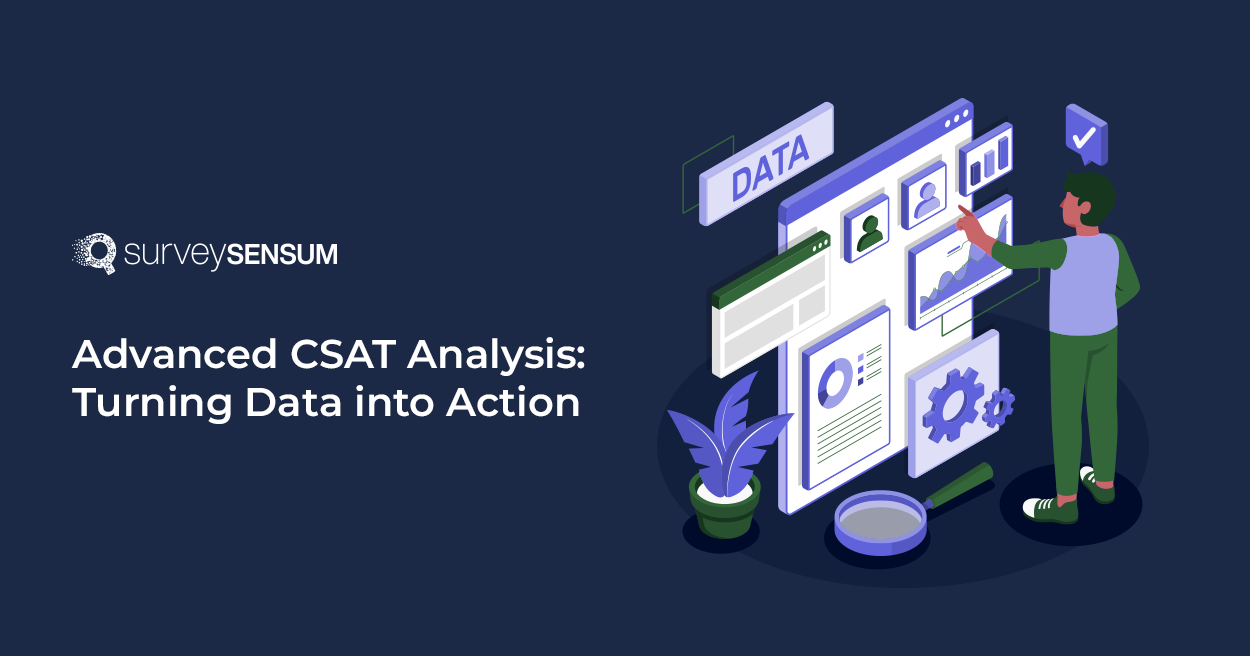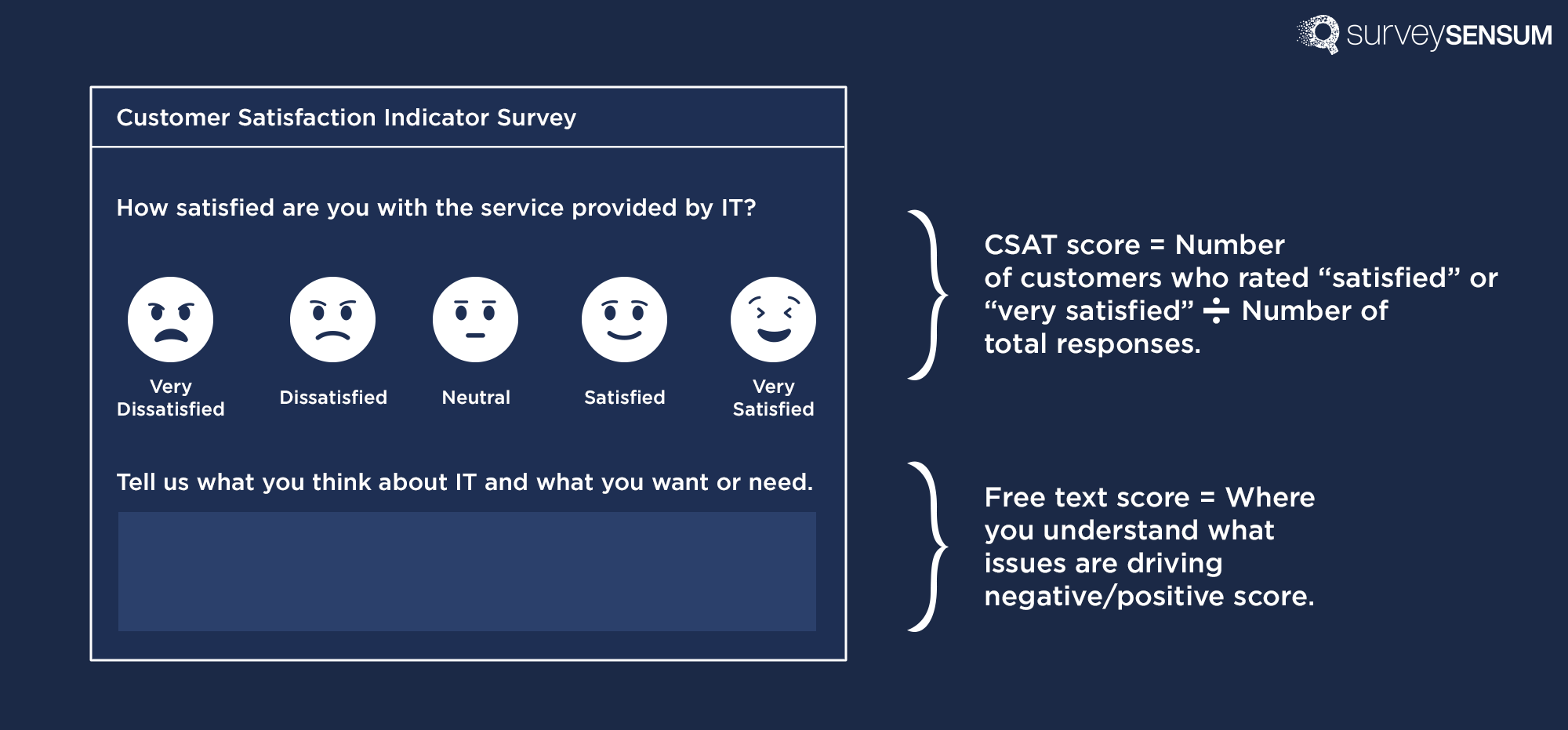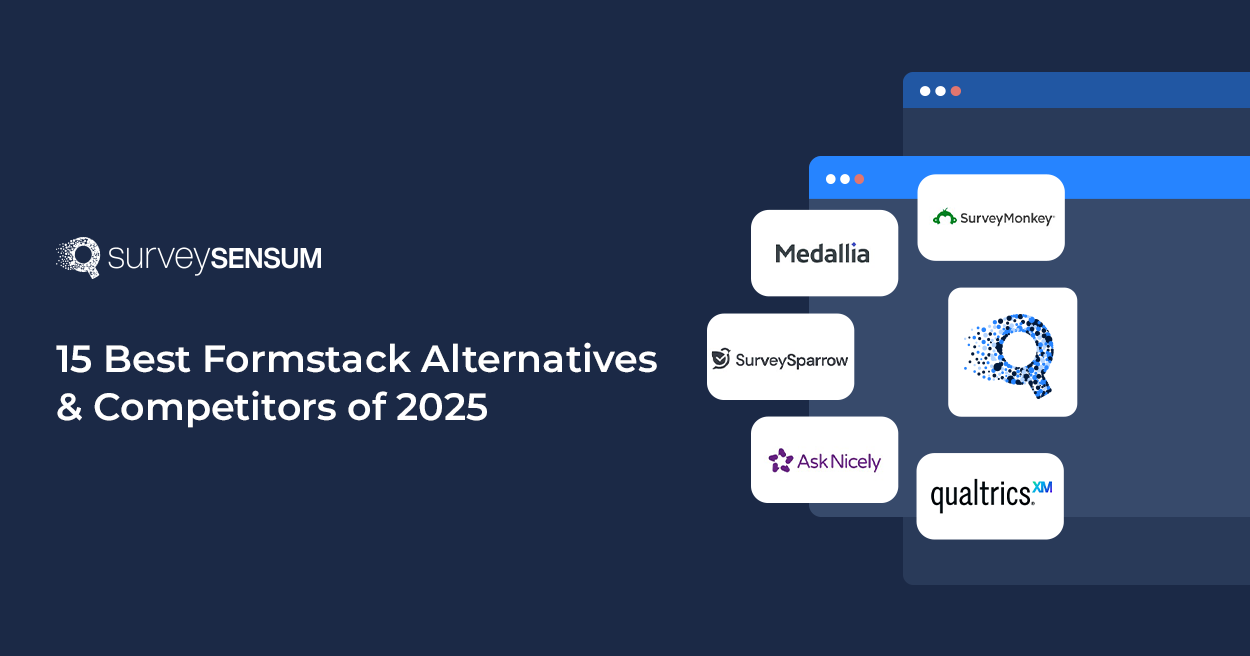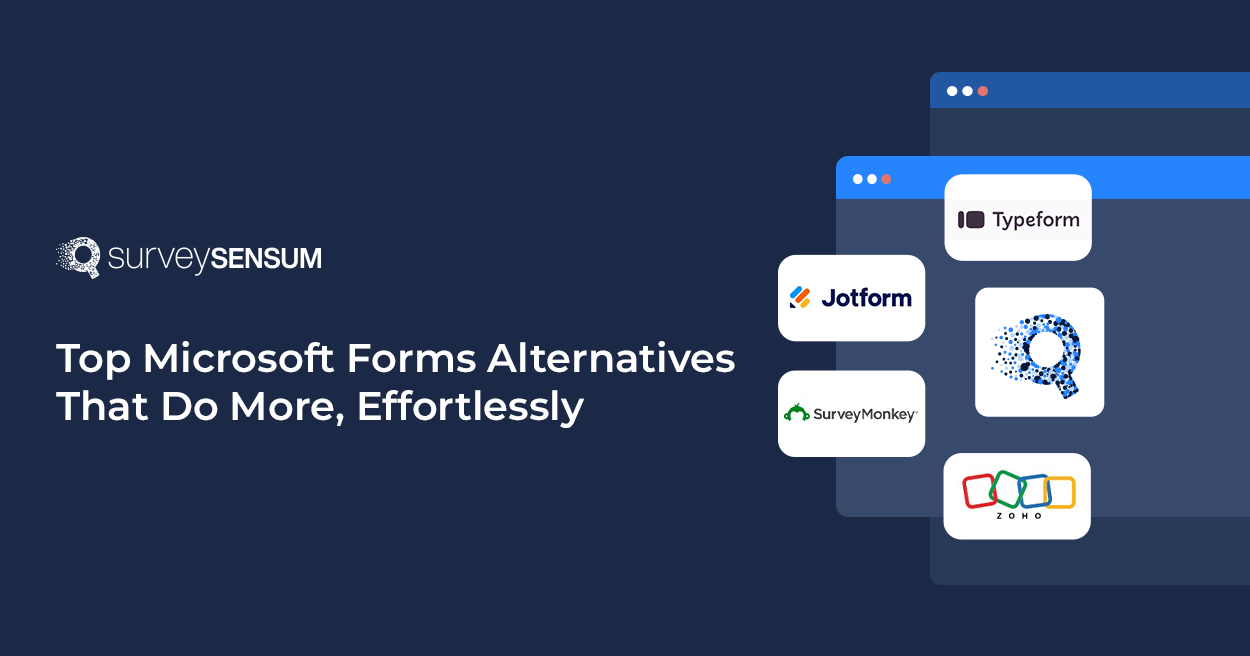
Launched a CSAT survey recently and received a ton of feedback, what’s next?
Letting them collect dust?
Launching the survey is the first step in gauging customer satisfaction. The next one is to analyze those feedback to extract actionable insights that will transform your feedback into revenue.
But imagine receiving a flood of feedback through reviews, surveys, social media, and customer service interactions. How would you do the CSAT analysis?
That’s where AI Text Analytics comes in handy.
Before the CSAT analysis, let’s talk about the type of CSAT feedback. There are essentially two types of CSAT feedback received in a survey:
Quantitative CSAT Feedback
→ On a scale of 1 to 5, how satisfied are you with your onboarding experience?
The numerical and measurable feedback that you gather from such closed-ended questions is Quantitative CSAT feedback.
This type of feedback is numerical and can be easily measured and analyzed. It helps in recognizing historical trends, understanding the impact of improvements over time, and pinpointing areas that require attention.
Quantitative CSAT Feedback can be calculated with a simple formula.

Here is an example of the calculation:
Let’s say you conducted a survey and received the following responses:
- Very satisfied: 50 responses
- Satisfied: 30 responses
- Neutral: 10 responses
- Dissatisfied: 5 responses
- Very dissatisfied: 5 responses
Number of “4” and “5” responses = 50 + 30 = 80
Total number of responses = 50 + 30 + 10 + 5 + 5 = 100
Proportion of satisfied customers = 80 / 100 = 0.80
CSAT = 0.80 * 100 = 80%
So, your CSAT score is 80%.
Calculate your CSAT score with SurveySensum to evaluate your customer satisfaction and extract actionable insights!
Qualitative CSAT Feedback
→ What was the reason behind your score?
The descriptive (wordy) feedback that you gather from such open-ended questions is Qualitative CSAT feedback.
This type of feedback consists of descriptive and detailed comments from customers about their experiences. It offers insights into customers’ feelings, opinions, and specific issues they encounter. Unlike quantitative feedback, which is numerical, qualitative feedback is textual and rich in context, offering a deeper understanding of customer satisfaction.
So, How to Analyze Qualitative CSAT Feedback?
Since the feedback is subjective (varying with individuals) analyzing it can be a bit tricky! Here’s how you can do it —
Perform Text Analysis
To begin with, use AI-enabled Text Analytics Tools. It automates the process of categorizing the open-ended responses into relevant categories and gives you top themes and sentiments in real-time.

For example, here’s how I use the Text Analytics software,
- Train the system. Go through the comments and divide them into categories. For example, for a SAAS company ‘Product Design’ ‘Pricing’, ‘Support’, and ‘Onboarding’ can be a few.
- Then add relevant keywords related to it.
- In tag analysis, you will see how the platform can tag every comment automatically.
- And give you a detailed report of top trends and sentiments in just a few minutes
Furthermore, qualitative analysis allows for the identification of emotional undertones in customer feedback. Words such as “frustrated,” “delighted,” or “disappointed” can signal the intensity of customer feelings. This detailed analysis helps in tailoring responses and solutions that address not just the what, but the why behind customer satisfaction levels.
Why is Text Analysis Important?
Traditionally, companies relied on manual analysis to sift through customer feedback. This method involves reading each feedback entry, categorizing it, and noting down recurring themes and sentiments. However, this process is time-consuming, prone to human error, and not scalable for large volumes of feedback.
Solution? Text Analysis.
With text analysis, you can get
- Real-Time Insights: Text analysis provides instant feedback on customer sentiments, allowing businesses to respond quickly to emerging issues.
- Accuracy: Automated analysis reduces the risk of human error and ensures consistent categorization and interpretation of feedback.
- Comprehensive Coverage: Text analysis can process all feedback, regardless of volume, ensuring no customer voice is overlooked.
With SurveySensum’s no-code Text Analytics tool, automate the process of analyzing thousands of feedback, identifying top customer trends and complaints, and extracting actionable insights that impact your bottom line!
How to Interpret CSAT Analysis Results?
Now that you have analyzed your CSAT data by performing text analysis, let’s understand how to interpret it.
Let’s take an example of a SaaS company to understand the step-by-step process of interpreting CSAT data.
1. Segment the Feedback
Once all the feedback is gathered, examine the data, and segment it to isolate the target areas.
For example, the SaaS company received the feedback on their new feature launch, analyzed it and this is what their data looks like:
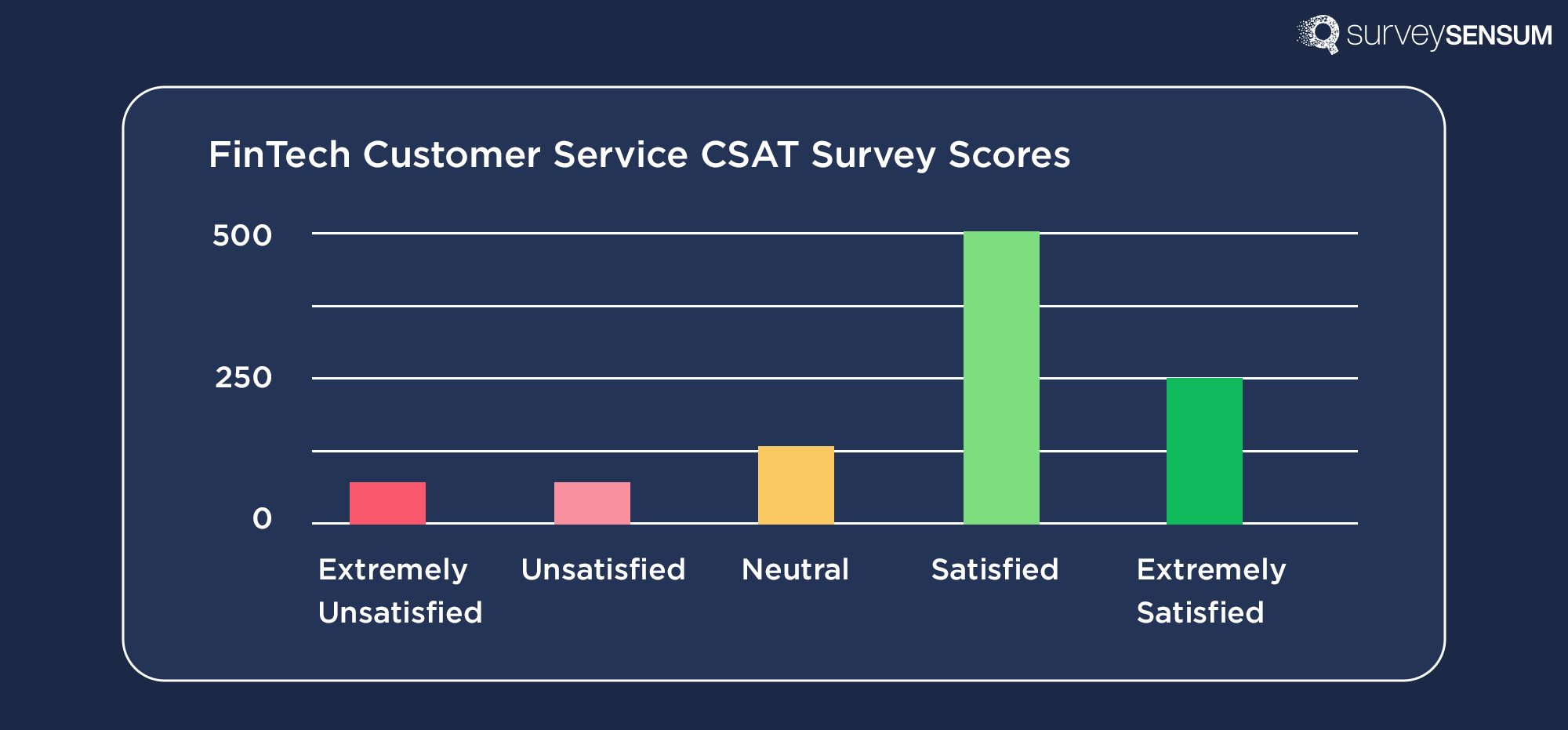
Now, instead of targeting each and every data group, the company decided to prioritize their action and focus on the “unsatisfied” and “very unsatisfied” groups. By focusing on these detractors first, the company can work towards addressing issues that might lead to potential churn.
2. Run Text Analysis For Further Analysis

Running text analysis on your focused segments will help you identify recurring themes, customer complaints, and top trends. This will facilitate further analysis and help you extract better and more actionable insights.
For example, the SaaS company ran a text analysis on the “unsatisfied” and “very unsatisfied” segments and discovered 5 common issues like “user interface”, and “onboarding”, etc which were reported by 56 customers and were trending. Now, this helped them visualize their issue better and resolve it in an effective manner.
3. Identify Key Drivers

Now discover the key drivers of your customer satisfaction because without it, how will you improve them? By identifying which area is performing well and which is not, you will be able to create an action plan that is both data-driven and lucrative.
For example, for the SaaS company, positive drivers can be “easy onboarding” or “pricing”, while the negative drivers can be “complicated user interface” or “non-intuitive”.
Now that the drivers are identified, the next step here is to prioritize the action because not all issues are the same. “Complicated user interface” was reported by 50 users and had an impact of 15% on the CSAT score, whereas, “non-intuitive” was reported by only 6 users and had an impact of 5%. Now, it is clear that the “complicated user interface” issue should be addressed on priority.
4. Close the Loop
The most important step in enhancing customer satisfaction is closing the loop with your customers. But more often than not, companies don’t tend to pay attention to this step.
Take action by establishing meaningful communication with your customers. Implement a real-time ticketing management system with an instant alert system, case management system, and seamless integration. This will ensure that you get notified of any negative comments in real-time, assign tickets to concerned persons, set SLAs, escalate issues, and seamlessly integrate customer data, tickets, contacts, etc across your CRM systems.
Why Analyze CSAT At All?
- Identification of Top Complaints and Patterns: With CSAT analysis you can identify recurring issues, prioritize areas that need immediate attention, and recognize patterns. This will allow you to address the root causes of complaints.
- Customer Sentiments: You can gauge customers’ sentiments about your product or service which will help you understand overall satisfaction levels.
- Areas of Improvement: It helps in pinpointing specific areas that require enhancement based on direct feedback.
- Historical Trends and Impact of Improvements Over Time: You can track changes in customer sentiment over time and measure the impact of implemented improvements. It also provides a benchmark to evaluate current performance and set future goals.
Conclusion
A mere glance at CSAT scores is not enough to stay on top of your game. You need a CSAT analysis that offers a comprehensive understanding of customer sentiments, identifies potential issues before they escalate, and highlights areas of excellence. But for all that you need a CSAT software, like SurveySensum, that can do it all – launch CSAT surveys in 5 minutes, gather real-time feedback across channels, calculate CSAT, automate the process of analyzing the feedback, and extract actionable insights from it.
By integrating SurveySensum into your customer experience strategy, you not only streamline the process of CSAT analysis but also gain the depth and breadth of insights necessary to drive meaningful improvements.
Calculate, Analyze, & Identify CSAT Key Drivers and Boost Your Customer Satisfaction
Frequently Asked Questions
Here’s how to effectively analyze CSAT scores:
- Collect CSAT scores from various touchpoints and compile them into a centralized database.
- Break down the data by different customer demographics, product lines, or service areas to identify specific patterns or issues.
- Determine the overall average CSAT score and compare it to historical data to identify trends.
- Examine open-ended responses for recurring themes and sentiments. Categorize feedback into thematic clusters to understand the nuances of customer experiences.
- Use visual tools like word clouds and sentiment charts to highlight key terms and emotions expressed by customers.
- Employ NLP and machine learning techniques to automate the categorization and interpretation of textual data, uncovering hidden patterns and sentiments.
A good CSAT score can vary by industry, but generally, a score above 80% is considered excellent. Here’s a breakdown of what different CSAT score ranges signify:
- Above 80% is considered awesome denoting your business has the highest number of satisfied customers.
- 60- 80% is considered good as this range suggests that your business has more satisfied customers.
- 40-60% is considered average with some space for improvement.
- 0-40% is not considered a good score because it shows that your business has more unsatisfied customers than satisfied.
Here are actionable steps to improve customer satisfaction:
- Gather Detailed Feedback: Regularly solicit detailed feedback from customers through surveys and direct interactions to understand their pain points and areas of satisfaction.
- Act on Feedback: Prioritize and address the issues highlighted by customers. Quick and effective resolution of problems can significantly boost customer satisfaction.
- Enhance Customer Service: Invest in training your customer service team to provide empathetic, efficient, and personalized service. Empower them with the tools and information they need to resolve issues swiftly.
- Improve Product/Service Quality: Continuously refine your products or services based on customer feedback. Ensure they meet or exceed customer expectations in terms of quality, usability, and value.
- Communicate Effectively: Keep customers informed about the steps you’re taking to address their concerns and the improvements you’re implementing. Transparent communication builds trust and loyalty.
- Monitor and Adjust: Regularly review CSAT scores and feedback to identify trends and emerging issues. Be agile in adjusting your strategies to respond to changing customer needs and expectations.






